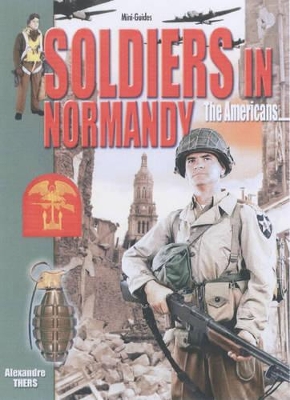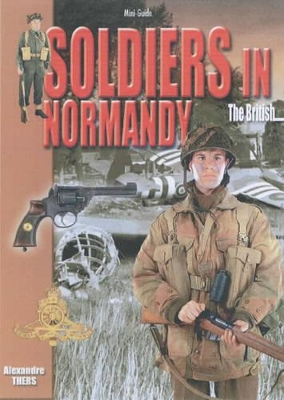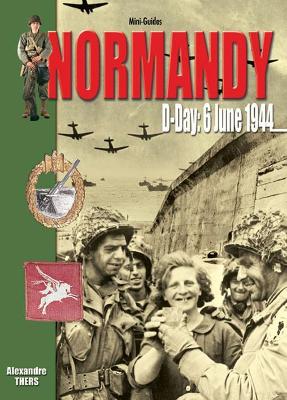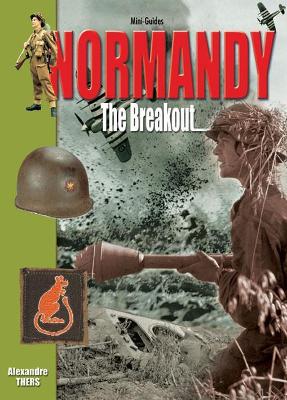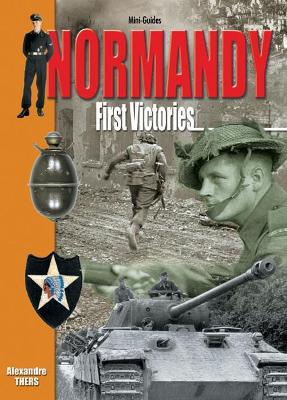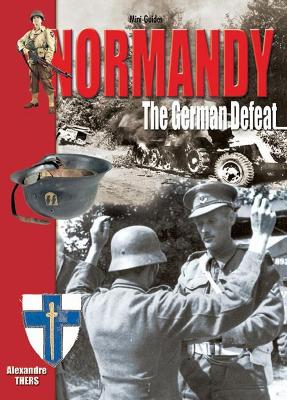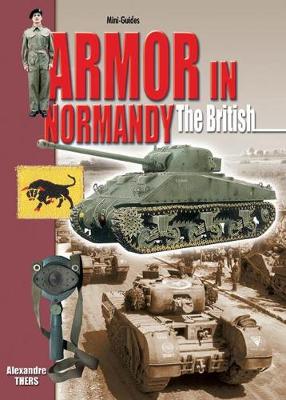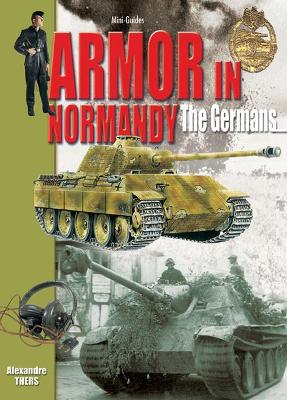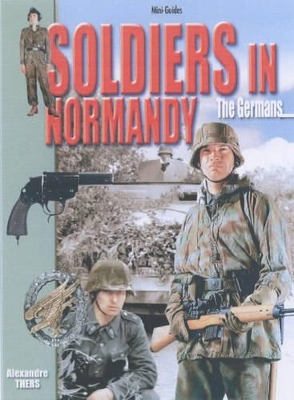Mini-Guides
9 total works
The American units that invaded Normandy were at full strength, well trained and supplied, and perfectly adept at teamwork. Although the vast majority of soldiers had no previous combat experience, they adapted quickly and effectively to the challenges confronting them in the Normandy countryside.
The regular infantry doctrine of rapid progress was rendered useless by the fragmented bocage terrain however, and GIs were forced to refine the time-proven tactic of`Fire and Movement.’ They brought to bear heavy and violent artillery barrages in order to close in and quickly annihilate the enemy. The advanced communications technology used by the Americans gave them a decisive advantage but above all they benefited from superb logistical support, enabling rapid deployment of men and resources when needed.
The U.S. Army made prodigious use of all kinds of vehicles, was not hindered at first by the fuel supply problems experienced by the enemy. American air supremacy and naval power also contributed mightily to German losses. Finally the cooperation between ground and air forces and between the artillery and the infantry as well the will to pursue the enemy relentlessly were crucial factors in the success of the American forces in Normandy.
Traditionally a maritime power, Great Britain had not given equal priority to the development of its land forces. The concentration on increasing air power added to this disparity in capabilities between the services. Manpower shortages in the infantry forced the high command to commit units in a rather measured fashion.
On the ground, this resulted in a lack of subtlety and initiative. Those divisions which did have previous combat experience, mostly in the Mediterranean sector were somewhat confounded by the very different terrain they encountered in Normandy. What’s more, somewhat worn down by earlier campaigns in North Africa and Italy, they appeared overly cautious.
The remaining divisions, despite many years of preparation, were not as well trained and prepared as their American counterparts. Only the Commandos and the Airborne forces were truly well prepared for what awaited them in France. Armored formations were regularly fielded without
the advantage of suitable infantry support and their AFVs were often outclassed by those of the enemy. They therefore suffered extremely high casualties. But the artillery was first class and powerful and played a large
part in paralyzing the movements of the enemy.
Normandy - D-Day 6 June 1944
by F. Vauvillier, Alexandre Thers, and Phillippe Charbonnier
In the first few days of June 1944, the Allies prepared to launch one of the most decisive operations of the Second World War: a massive assault on the Normandy coastline. It was a risky enterprise, seeking, as it did, to deliver a mortal blow to German forces in the west whilst the Red Army eliminated those in the east. It was a crucial moment for the Anglo-Saxon allies.
Defeat could spell disaster for the alliance and, just when morale was at its lowest ebb in Britain, would have had incalculable repercussions. Hitler too was well aware of the risks. For him the assault was to be decisive, his victory or his defeat in Normandy would decide the outcome of the war.
It was therefore crucial for the Wehrmacht to beat the Allies within the first 24 hours.
Normandy - the Breakout
by F. Vauvillier, Alexandre Thers, and Phillippe Charbonnier
By July 1944, despite the launch of Operation Epsom, the British and Canadians were still pinned down before Caen on the eastern section of the front. German troops were, however, tied down here and had to abandon any hope of throwing the invaders back into the sea. German High Command was, meanwhile, overhauled with von Kluge replacing von Runstedt.
To the west the Americans, having seized Cherbourg, were eager to secure the Cotentin peninsula and launch the next phase of the battle for Normandy. This would be a breakout between Saint-Lo and Coutances and would allow the Americans, heading south and then swinging westwards into Brittany, to leave the Norman hedgerows behind. But any such move would have to be quick and decisive or the Germans would succeed in keeping them bottled up.
July would decide the fate of the struggle for Normandy.
Normandy - First Victories
by F. Vauvillier, Alexandre Thers, and Phillippe Charbonnier
By the dawn of 7 June some 152,000 Anglo-American troops had set foot on the Normandy coast, testimony that the D-Day landings had been a success. But the battle was far from over; beachheads had to be reinforced and troops prepared to face the inevitable German counterattack. The weather, too, added to the uncertainty as it had the power to interrupt supplies and reinforcements.
The American objective was to seal off the Cotentin peninsula, thereby forcing the surrender of the massive port of Cherbourg. For the British, Caen, capital of Lower Normandy and gateway to Paris, became the target. They prepared to launch a quick and formidable blow to seize the place but were frustrated a handful of miles from the town by German panzers.
Would the Allies be able to break out and end the campaign with a decisive blow?
Normandy - the German Defeat
by F. Vauvillier, Alexandre Thers, and Phillippe Charbonnier
In early August 1944 the left wing of the German 7th Army collapsed following the American breakthrough at Avranches. The Americans quickly modified their plans and, instead of heading for Brittany, prepared to sweep eastwards and, in conjunction with the British, sought to cut off German forces in Normandy.
Von Kluge, conscious of the danger, called upon reinforcements and launched an attack from Mortain. This counterattack, operation Luttich, should have kept the Americans at bay whilst the Germans pulled back to the Seine but its failure brought about inexorable defeat.
Armor in Normandy - the Germans
by F. Vauvillier, Alexandre Thers, and Phillippe Charbonnier
German forces stationed in Normandy at the time of the invasion were mainly Army (Heer) infantry divisions, most of which were supported by horse drawn transport. Amongst these were so-called`static’ units which were incapable of maneuver. The majority of these formations were of mixed ability and had little combat value. The sole exception to this was the 6thFallschirmjäger-Division, made-up of welltrained and fanatical paratroopers. As for armored forces, the German army could only boast three divisions which were truly combat-ready.
By contrast, the Waffen-SS panzerdivisions were vastly better and demonstrated their superiority in combat. Often outclassed by the Allies in terms of materiel (particularly the number of tanks), logistics and suffering from a crippling shortage of fuel, the Germans were literally pushed around by the attackers, being forced to react to rather than to initiate combat, in the most part. Their situation was made even worse by the fact that they could not count on air support.
Despite all of these shortcomings, the Germans used all off the opportunities afforded them by the landscape of Normandy, particularly the Bocage region, to inflict severe damage on Allied units.
